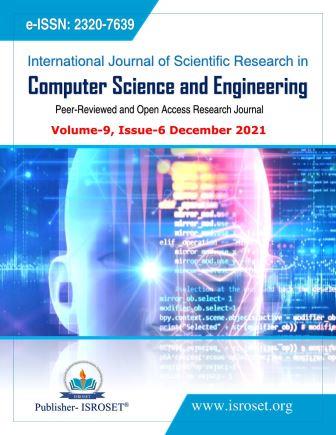Survival Model of Prostate Cancer Patients Using Machine Learning Neural Networks Techniques
Keywords:
Prostate Cancer, Cancer, Survival, Neural Networks, Linear Regression, Artificial Intelligence, Machine Learning, StatisticsAbstract
Prostate cancer is the most common cancer in men in the United States. Death in prostate cancer patients is often related to medical conditions other than prostate cancer itself. Hence, it is important to predict survival so personalized care can be offered to the patients. The researcher developed a simple and credible model for estimating all cause-mortality in patients with prostate cancer using inputs of age, race, comorbidities, and baseline PSA. The researcher used a de-identified database of approximately 1000 patients with prostate cancer diagnosed between 1995-2016. After cleaning the data and omitting confounding variables, the database contained approximately 800 patients. The researcher ran different statistical and computer models to develop an accurate model to determine survival. This was done by breaking the dataset into training and testing subsets. The best algorithm was neural network regression with a Stochastic Gradient Descent optimizer and mean absolute error loss. This model had a mean squared error of approximately 1.75 months. Finally, the researcher created an intuitive user interface for doctors to use at bedside. The researcher believes that this customized survival estimation will provide valuable information to oncologists on top of the traditional TNM cancer staging. This can guide which patient needs aggressive therapy versus not, hence protecting patients from unnecessary side effects, improving quality of life, and saving health care dollars. Integrating Artificial Intelligence in medical decision-making can lead to the development of personalized care plans for cancer patients based on age, ethnicity, and co-morbidities.
References
M. Buyyounouski, et al. “Prostate Cancer – Major Changes in the American Joint Committee on Cancer Eighth Edition Cancer Staging Manual.” American Cancer Society Journals, Vol.67, Issue.3, pp.246-253, 2017.
“Abdominal obesity and prostate cancer risk: epidemiological evidence from the EPICAP study.” Oncotarget, Vol.9, No.77, pp.34485-34494, 2018.
K. Hemant. “Machine Learning – A New Paradigm of AI.” International Journal of Science Research in Network Security and Communication, Vol.7, Issue.3, pp.31-32, 2019.
R. Jaisankar, D. Victorseelan. “A Comparison of Statistical Discriminant Analysis and Artificial Neural Network Model for the prediction of breast cancer.” International Journal of Science Research in Mathematical and Statistical Sciences, Vol.6, Issue.2, pp.284-289, 2019.
H. Burke, P. Goodman, D. Rosen, D. Henson, J. Weinstein, F. Harrell, J. Marks, D. Winchester, D. Bostwick “Artificial neural networks improve the accuracy of cancer survival prediction.” Cancer, Vol.79, No.4, pp.857-862, 1997.
J. Cruz, D. Wishart. “Applications in Machine Learning in Cancer Prediction and Prognosis.” Cancer Informatics, Vol.2, pp.59-77, 2006.
G. Joshy, E. Banks, A. Lowe, et. al. “Predicting 7-year mortality for use with evidence-based guidelines for Prostate-Specific Antigen (PSA) testing: findings from a large prospective study of 123,697 Australian men.” BMJ Open, Vol.8, Issue.12, pp.1-12, 2018.
National Comprehensive Cancer Network (NCCN) Clinical Practice Treatment Guidelines in Oncology. Prostate Cancer, Version 1.2021.
Downloads
Published
How to Cite
Issue
Section
License

This work is licensed under a Creative Commons Attribution 4.0 International License.
Authors contributing to this journal agree to publish their articles under the Creative Commons Attribution 4.0 International License, allowing third parties to share their work (copy, distribute, transmit) and to adapt it, under the condition that the authors are given credit and that in the event of reuse or distribution, the terms of this license are made clear.







